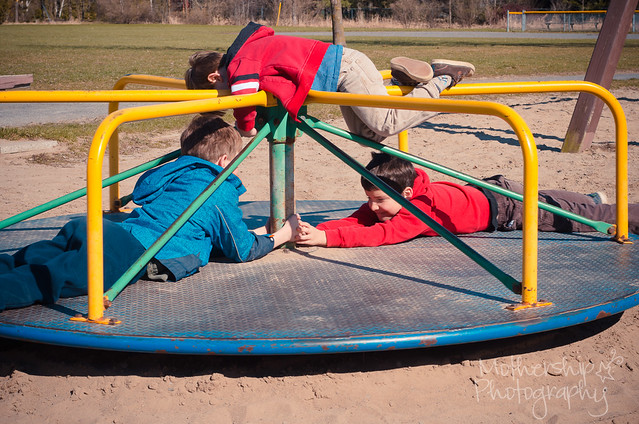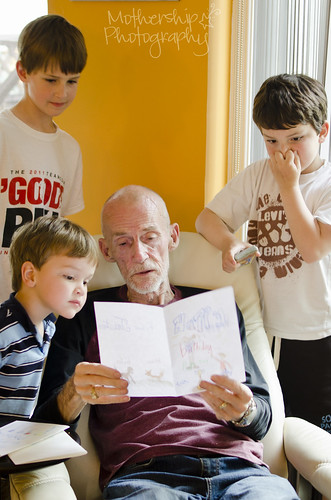This blog post is part PSA and part rant.
The PSA part is that the city is planning to update the play structures at George McLean park in Manotick. (Thanks to the Manotick Village and Community Association for the notification on this one!) According to the MVCA parks and recreation page:
The City is replacing aging play structures in George McLean Park, and would like community input as to the type of new play structures it would like to have.
The city has advised of the following mandatory play equipment changes:
1. The sand will be removed and replaced with wood chips
2. The little merry-go-round/roundabout will be removed for safety reasons.The city has asked residents to provide their comments on replacement options and if possible to also complete this questionnaire..
Comments and completed questionnaires should be sent to secretary@manotickvca.org.
The deadline for feedback to the City is April 11; removal and replacement of the structures is expected to begin in August.
(I know the deadline was last Friday – I’m hoping we can get a bit of an extension for comments.) So families, if you are interested in what happens to George McLean park, please take a moment to express your opinions.
Here comes the rant.
The city wants to remove the roundabout for “safety” reasons. This makes me crazy. That roundabout was our hands-down favourite feature of that park. Look!
It’s old, I know. My attachment may be purely nostalgic. Maybe there is a perfectly good reason for this gorgeous retro roundabout to be removed – but I suspect there is not. I fear the safety issue is not in its construction or durability but in its inherent design. I fear that what we are facing is not a safety issue but a liability issue. We are not protecting the kids, we are protecting the city.
Yes, kids will go flying off the roundabout- remember how much FUN that was? Did you ever get one of those metal bars to the cheekbone? I did – and I learned to keep my face out of the way the next time. And I learned about centrifugal force at the same time. Fun + learning = learning that stays with you!
I’m not the only one ranting about disappearing roundabouts. Check out these articles from Free Range Kids and KATU media in Portland, Oregon, both published within the last few months on this subject.
I fear, however, that I am waging a lost battle.
@jpmacnab @DaniGirl sorry but safety has to trump!
— Jim Watson (@JimWatsonOttawa) April 15, 2014
If you have a few extra minutes to spare, please read this brilliant article from the March 2014 edition of The Atlantic entitled The Overprotected Kid. This is exactly what I am afraid we are denying our children when we coddle and overprotect them:
[Ellen Sandseter, a professor of early-childhood education at Queen Maud University College in Trondheim] began observing and interviewing children on playgrounds in Norway. In 2011, she published her results in a paper called “Children’s Risky Play From an Evolutionary Perspective: The Anti-Phobic Effects of Thrilling Experiences.†Children, she concluded, have a sensory need to taste danger and excitement; this doesn’t mean that what they do has to actually be dangerous, only that they feel they are taking a great risk. That scares them, but then they overcome the fear. In the paper, Sandseter identifies six kinds of risky play: (1) Exploring heights, or getting the “bird’s perspective,†as she calls it—“high enough to evoke the sensation of fear.†(2) Handling dangerous tools—using sharp scissors or knives, or heavy hammers that at first seem unmanageable but that kids learn to master. (3) Being near dangerous elements—playing near vast bodies of water, or near a fire, so kids are aware that there is danger nearby. (4) Rough-and-tumble play—wrestling, play-fighting—so kids learn to negotiate aggression and cooperation. (5) Speed—cycling or skiing at a pace that feels too fast. (6) Exploring on one’s own.
This last one Sandseter describes as “the most important for the children.†She told me, “When they are left alone and can take full responsibility for their actions, and the consequences of their decisions, it’s a thrilling experience.â€
And here’s a fascinating and relevant set of statistics about just how little of a difference our endless safety standards are having:
According to the National Electronic Injury Surveillance System, which monitors hospital visits, the frequency of emergency-room visits related to playground equipment, including home equipment, in 1980 was 156,000, or one visit per 1,452 Americans. In 2012, it was 271,475, or one per 1,156 Americans. The number of deaths hasn’t changed much either. From 2001 through 2008, the Consumer Product Safety Commission reported 100 deaths associated with playground equipment—an average of 13 a year, or 10 fewer than were reported in 1980.
In other words, we’ve taken away all the fun, all the learning, all the exploration and adventure, and in exchange we’ve gained — nothing.
Speaking of statistics, check out this link from the Royal Society on the Prevention of Accidents. The leading causes of accidents on children’s playgrounds are swings (40%), climbers (23%) and slides (20%). Roundabouts come in at a measly 5%! And nobody is talking about taking away the slides or the swing. (Thanks to Jane at the MVCA for the link!)
If you’d like to have your say about what happens to the George McLean park play structures, please complete this PDF questionnaire from the city. (If I can get my hands on an electronic version, I will share it.)
And while you’re at it, please put in a kind word for our roundabout. Some things are worth saving!
Got anything to say on the subject of the modernization of retro playground equipment? You know I’d love to hear from you!




